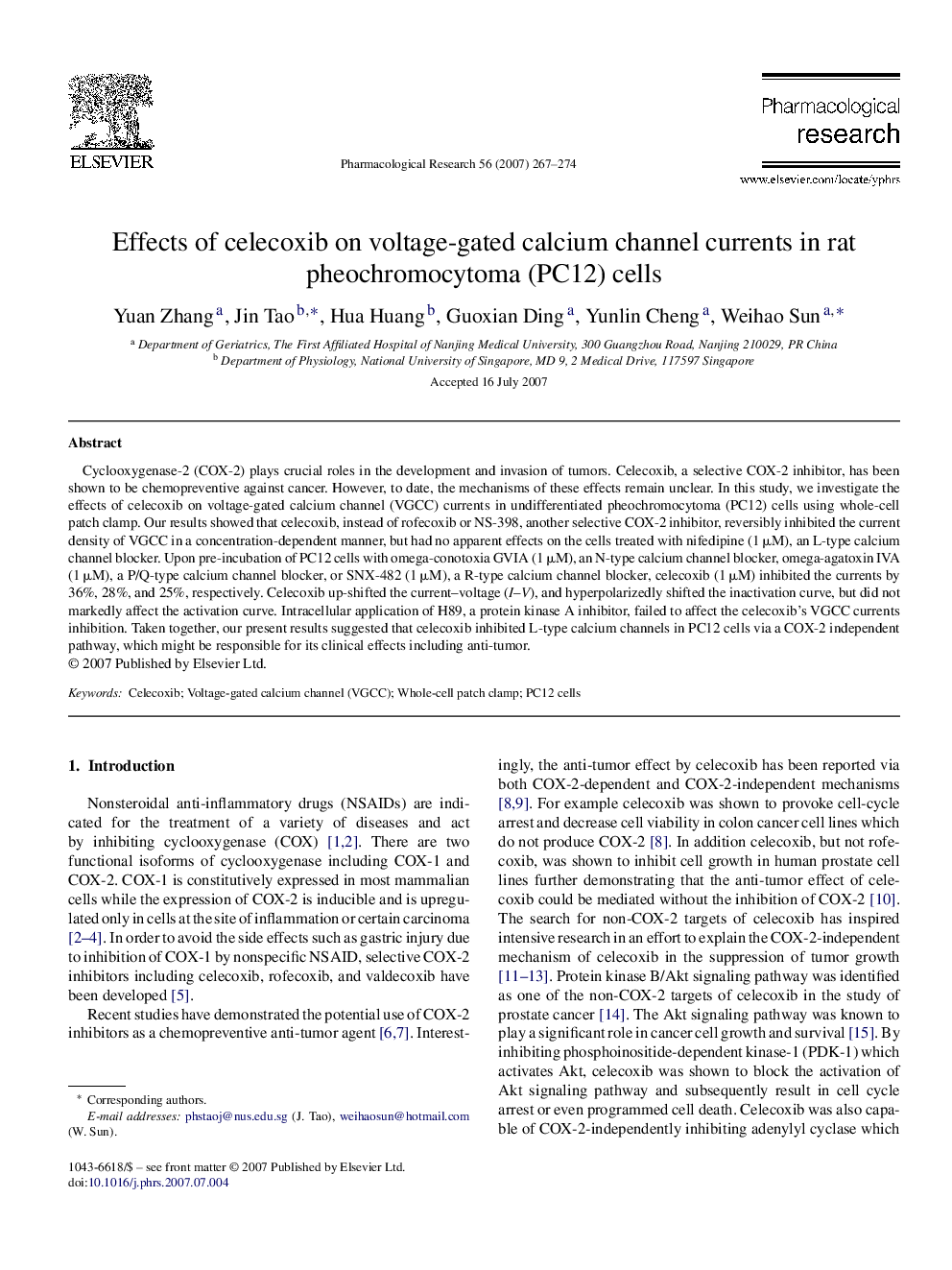| Article ID | Journal | Published Year | Pages | File Type |
|---|---|---|---|---|
| 2562957 | Pharmacological Research | 2007 | 8 Pages |
Cyclooxygenase-2 (COX-2) plays crucial roles in the development and invasion of tumors. Celecoxib, a selective COX-2 inhibitor, has been shown to be chemopreventive against cancer. However, to date, the mechanisms of these effects remain unclear. In this study, we investigate the effects of celecoxib on voltage-gated calcium channel (VGCC) currents in undifferentiated pheochromocytoma (PC12) cells using whole-cell patch clamp. Our results showed that celecoxib, instead of rofecoxib or NS-398, another selective COX-2 inhibitor, reversibly inhibited the current density of VGCC in a concentration-dependent manner, but had no apparent effects on the cells treated with nifedipine (1 μM), an L-type calcium channel blocker. Upon pre-incubation of PC12 cells with omega-conotoxia GVIA (1 μM), an N-type calcium channel blocker, omega-agatoxin IVA (1 μM), a P/Q-type calcium channel blocker, or SNX-482 (1 μM), a R-type calcium channel blocker, celecoxib (1 μM) inhibited the currents by 36%, 28%, and 25%, respectively. Celecoxib up-shifted the current–voltage (I–V), and hyperpolarizedly shifted the inactivation curve, but did not markedly affect the activation curve. Intracellular application of H89, a protein kinase A inhibitor, failed to affect the celecoxib's VGCC currents inhibition. Taken together, our present results suggested that celecoxib inhibited L-type calcium channels in PC12 cells via a COX-2 independent pathway, which might be responsible for its clinical effects including anti-tumor.
